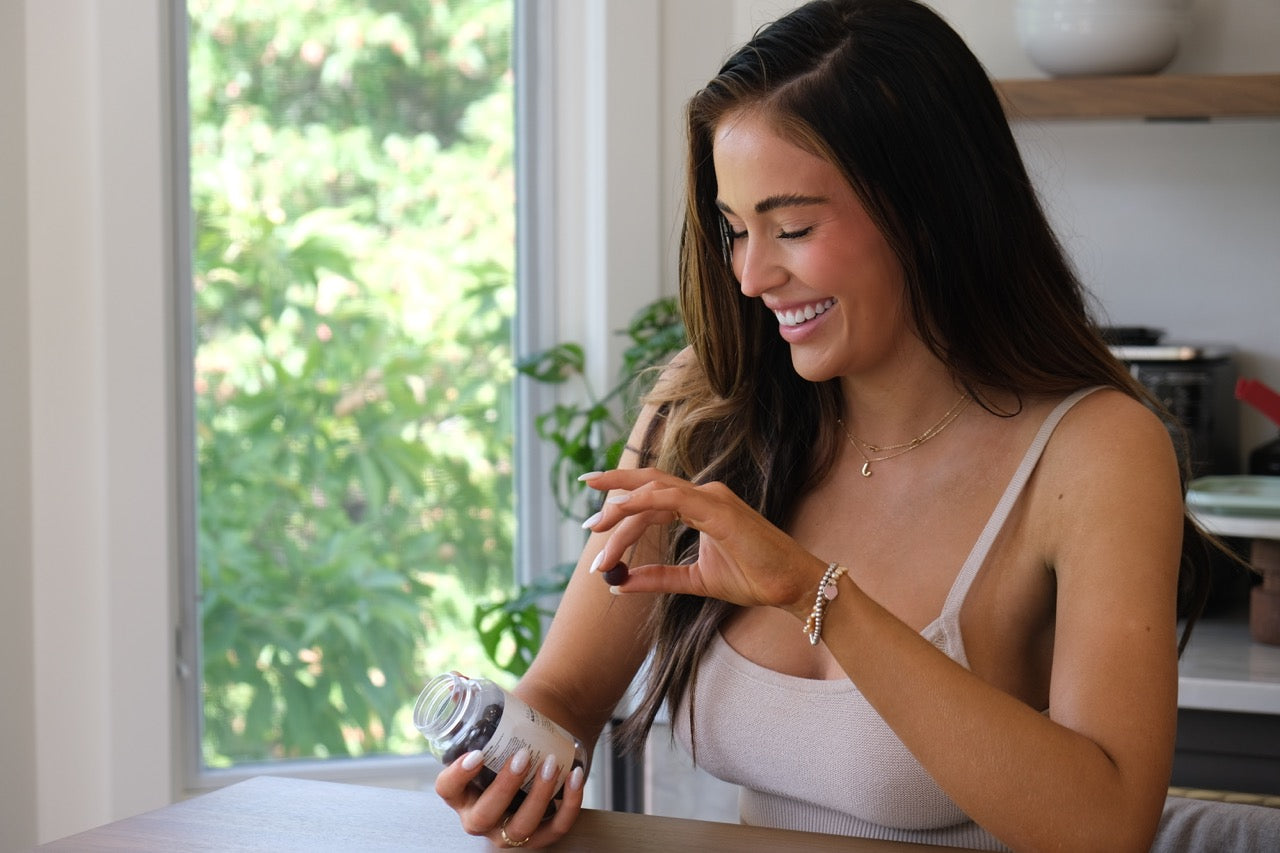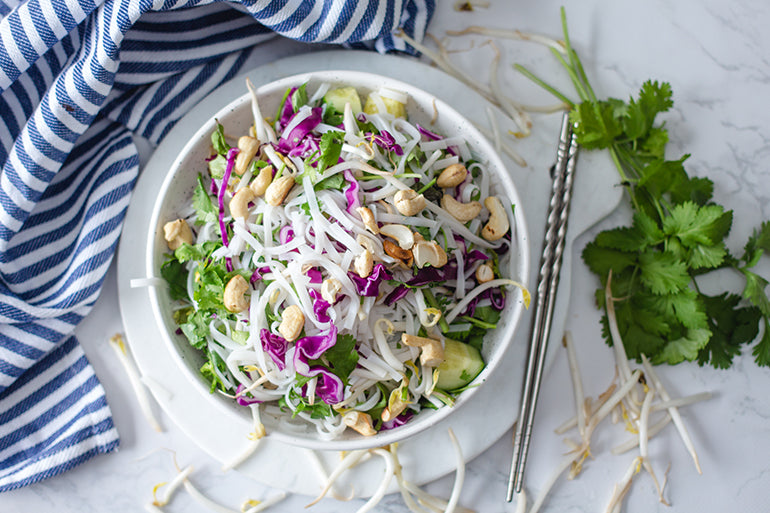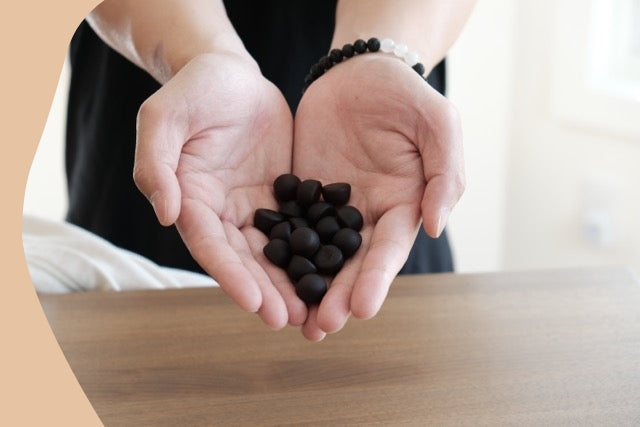
Beginner's Guide to Vinyasa Yoga
Whether you’re looking to do some yoga at home or joining a studio, it’s important you know that there are quite a few different types of yoga. Some are quite difficult and some are more mellow. Depending on what you’re looking for, you can choose which style you want to use and when.
Vinyasa yoga is probably the most widely practiced type of yoga in the West (with the exception of Hatha yoga), and if you see a non-descriptive yoga class on a schedule, this is probably what’s in store for you.
This article will give you a brief introduction to what you can expect in this type of class, specific yoga benefits, some common vinyasa yoga poses, and tips for starting out. Yoga is not a sport where you are in competition with your peers so if you’ve been avoiding going to class because you’re worried about not being good at it, just let those thoughts go. Yoga is all about encouraging people to develop a steady practice no matter where you are in your life or what you can or can’t do.
What You Can Expect in a Vinyasa Yoga Class
Most classes are going to involve a slow beginning and then the pace will pick up to be a bit more challenging. It will conclude with some slower movements and a rest known as savasana at the end of class. The usual sequence involves a sun salutation, which is a basic sequence of poses that is often repeated quite a few times in class.
The teacher will instruct you when to breathe in and when to breathe out. This not only helps you bring more oxygen into your body, but it also helps you relax as well. There is a big focus on breathing in a vinyasa class, and you will find the ujjayi breathing technique that is taught will help you keep up with the class. This breathing technique is done by creating a slight constriction in the back of your throat so that the air doesn’t flow through all at once. It is done only through the nose, and if you’re doing it right, it will make a sound like ocean waves (especially when you exhale).
Each instructor has their own unique style of teaching, so you may want to find someone who is thorough in explaining new poses and concepts if you don’t want to feel lost. Some teachers will skip the education portion for discussions that inspire you on a soul level, and hey, let’s be honest, sometimes that’s what we need. Hopefully, you find a teacher that has a good balance of both. Try a few teachers and see which one you feel most comfortable with.

Benefits of Vinyasa Yoga
The physical benefits of vinyasa yoga are far more than just getting more flexible. You will build strength, your immune system will fight off sickness better, and you will reduce your risk of injury by becoming less stiff. Your digestion, mental clarity, and energy will go up while painful inflammation and build-up of toxins will be reduced. Even your skin will begin to glow and it can even activate the hair follicles in your head to improve hair growth. Your heart health and blood pressure are also going to benefit. Yoga can help you lose weight, tone your muscles and stabilize your core to reduce back pain.
On a mental and spiritual level, you will find you are able to handle anxiety better with a consistent yoga practice. You will feel calmer and less dependent on the outer world for happiness. Yoga is also a way to train your mind and it can help you get in touch with who you really are so you can start to create healthy boundaries in all areas of life. It can also help you learn to think more loving and compassionately by noticing and directing your thoughts. It activates your energy by aligning your chakras, which will help you sense your connection to life in a much deeper way.
All types of yoga including vinyasa are healing and therapeutic, helping harmonize your mind, body, and soul. It can help you release old emotional wounds and develop confidence, character, and commitment. It helps release the happy chemicals that can help you overcome depression or feelings of loneliness (it’s great to start when you go through a breakup by the way). It can help you heal after trauma even if it’s been forty years since it occurred. It will connect you to your intuition and open your creativity to help you find new ideas easily.
We could keep going, but the point is, yoga has many benefits.
How Vinyasa Yoga Is Different from Other Types of Yoga
Vinyasa yoga is considered a ‘flow’ style of yoga. It links each movement to an inhale or an exhale; it’s like a dance in that the teacher guides you through to represent getting into the flow of life.
Finding a peaceful state in transition teaches the student to take the practice off of the mat and apply it to their lives. It can be quite physically challenging compared to some types of yoga, like yin or restorative yoga, but there are other types that could be even more challenging. Yin and restorative yoga are therapeutic and relaxing. They focus on slow deep breathing and relaxing into poses. They help reduce soreness and poses are usually held for at least a few minutes.
Ashtanga yoga involves ‘vinyasa’ as some like to refer to the sun salutations as. However, vinyasa yoga has an unlimited combination of poses while ashtanga is structured with the same sets and has very difficult poses which earned it the nickname ‘pretzel’ yoga. Hatha yoga is more alignment and anatomy focused and often appeals more to those who are working with an injury or are looking to still the mind. The poses are held longer with more instruction on muscle engagement and correct posture. Iyengar yoga is similar in that it focuses on the proper posture and more minute muscle engagements that will make you feel like an expert on every pose. It will also teach you a lot about your own body because of the microscope style of teaching.
There are twenty-two main types of yoga in the West with many offshoots and hybrid styles. Kundalini yoga is a more traditional form of yoga which works on the emotions, the mind and the energy more than the physical form. This style involves deep meditations, esoteric breathing and chanting with some physical poses all wrapped together.
A Brief History of Vinyasa Yoga
Yoga was developed thousands of years ago and the poses were originally in Sanskrit. The system of yoga includes what are called yamas and niyamas. This encompasses the ethical practices taught in the eight limbs of the yogic system. In addition to the philosophical system, there are breathing techniques called pranayama as well as mantras which help guide the mind.
Much of these practices are about cleansing the mind and the body so one may connect with pure consciousness (samadhi). Vinyasa yoga is part of just one of the eight limbs of yoga, which is asana (meaning physical posture). Krishnamacharya is considered the father of yoga in the West. He was the teacher to Pattabhi Jois, B.K.S., Iyengar, and others.
Common Vinyasa Yoga Poses
There are many more poses than this that can be included in a class, but these are likely to be in any class you to take so they will help you feel like you have a starting point. Usually, a class will have a focus, whether it be on stretching the hips, working on inversions (upside-down poses) or even a specific chakra (energy center).
No one expects you to memorize the poses or know them at all before going to a class. Everyone is welcome in yoga and you can usually find a beginner’s class that will help you get to know the poses.
Mountain
This pose is rather simple. Stand tall with feet together and palms open facing forward. Reach your fingertips toward the ground and tuck the tailbone slightly. Micro-bend the knees and try to equally displace your weight in your feet. Lengthen the back of the neck and pull your front ribs in.
Forward Fold
Bend forward bringing your head towards your knees. Place your hands on the ground or pull on the backs of the ankles to stretch deeper into the pose. If your hands don’t reach the ground yet, be patient. Flexibility comes over time.
Chaturanga
Beginning in a high plank push up position, lower so your elbows are in at your sides and bent to ninety degrees. Bring the knees to the ground if needed. Lower the chest to the ground.
Upward Facing Dog
Laying on your stomach with your hands on the ground under your shoulders, press into your hands to lift your chest. Pull your shoulders down away from your ears and stretch across the chest. Keep your toes untucked and lower belly pulling in to protect your lower back.
Downward Facing Dog
With hands and feet on the ground, lift your hips coming into a triangle position. Keep your hands shoulder-distance apart and feet hip-distance apart. Press your heart towards your thighs and sink your heels towards the ground as you work on straightening your legs.
Tips for Starting Out:
Every time you start a new hobby, it’s good to get a few pointers from those who have been there. These tips will help you get the most out of the practice and can help you avoid some of the common pitfalls many yogis have learned when starting out.
- Take Breaks as Needed
You are in charge of what you choose to do and you can take a break at any time. If you feel like you need to slow down, just rest and join back in when you’re ready. This can help you see how hard it is in your mind to make decisions on your own which is a great way to find your independence.
- It’s Not a Competition
This is not about being able to perform the best moves and you can expect your mind to compare yourself with others. Redirect your mind to listen to the teacher’s instructions and focus on being present. Do not obsess over mastering the hardest poses or you’ll miss the point.
- If You Have an Injury, Let the Teacher Know
Not all yoga teachers are experts in anatomy and many will offer physical adjustments in class. If you do not want to be adjusted, let them know at the beginning of class (don’t be shy). Also, they may be able to offer safe alternative poses for you.
- If You Feel Pain, Stop
You’ll hear teachers say ‘listen to your body.’ This will help you avoid injury so you can keep practicing and receive the maximum benefit. Don’t be a perfectionist.
- Give Yourself Time to See the Benefits
Be consistent and practice daily. If you’re not feeling up to it, just do a little bit. Most people say they always feel better afterward and the deeper effects of yoga come with making a habit of it.
Closing Thoughts…
As we pursue our life goals, taking even a few minutes to do some stretches every day can help us stay healthy and prevent many long-term health problems. Yoga also has many facets, so you’ll find that once you start learning, you can always find more to study so that you’re always growing. Many people are starting to understand the scientific benefits of adopting a lifestyle focused on wellness living where the small decisions we make about food, exercise, and mindfulness keep us healthy and our stress low so we can make sound decisions and enjoy this journey of life.
Hopefully, this makes you feel prepared to get on a mat and start doing some yoga. If you feel like you want to learn more before starting, take the time you need. Your intuition will guide you to the right form of movement or meditation that will help you. We each are unique and there are times in our lives when we may feel called to do vinyasa while other times we may just want to sit in silence and meditate. Vinyasa yoga helped me launch into a life I didn’t know was possible. It was the starting point for self-empowerment, health, and deep spiritual connection. I hope you find it just as helpful as I have.
Related Article: What Kundalini Yoga Can Do For You











